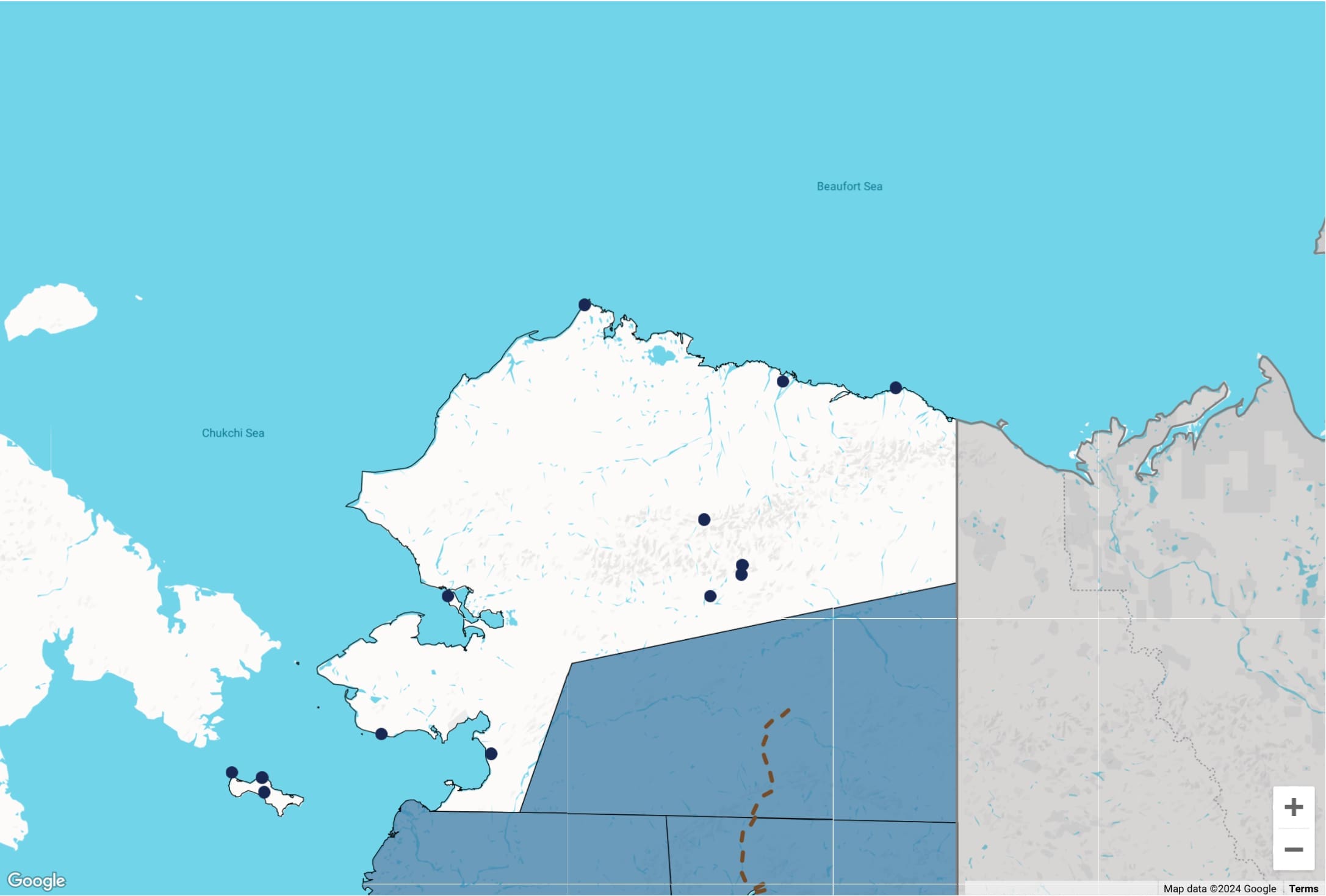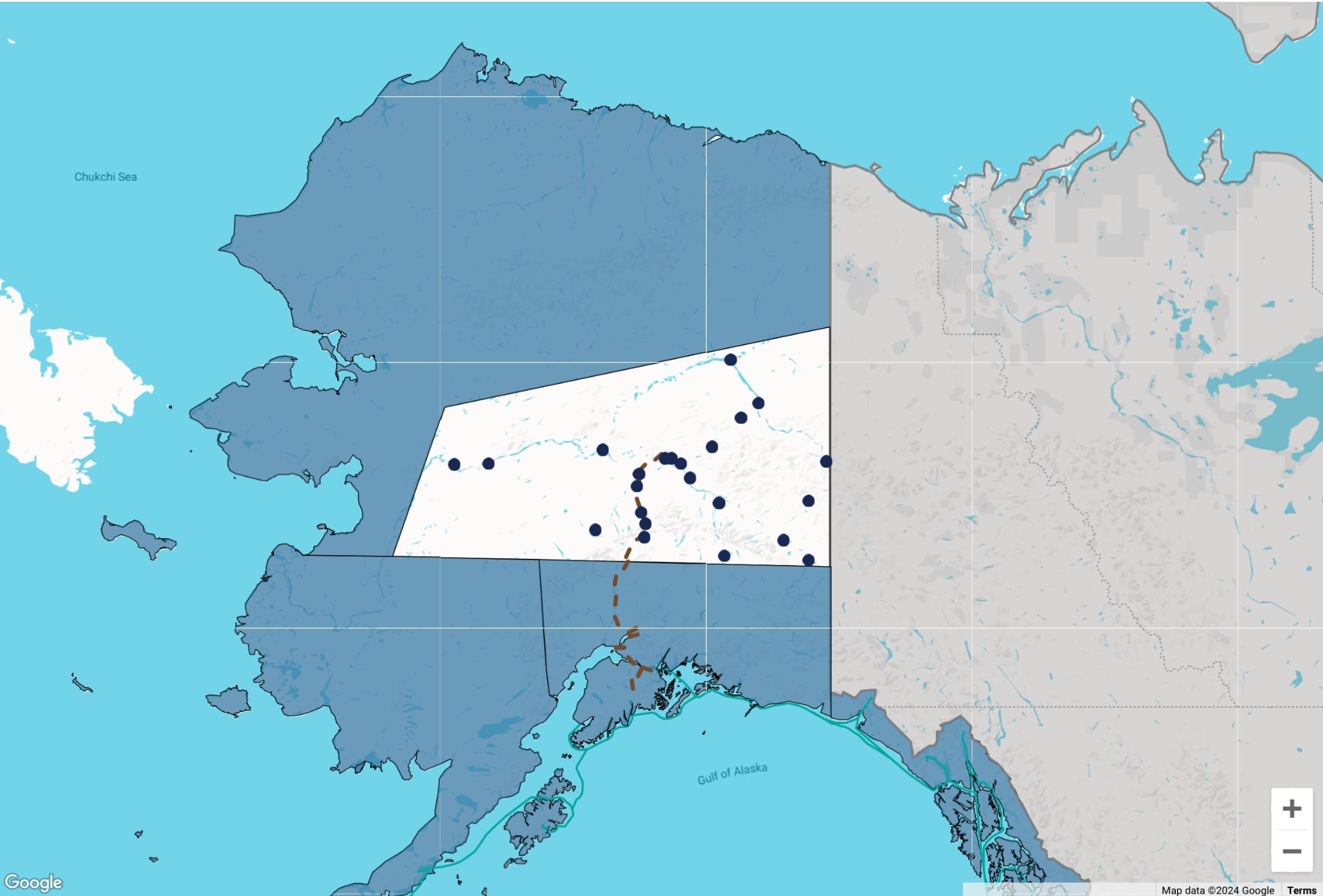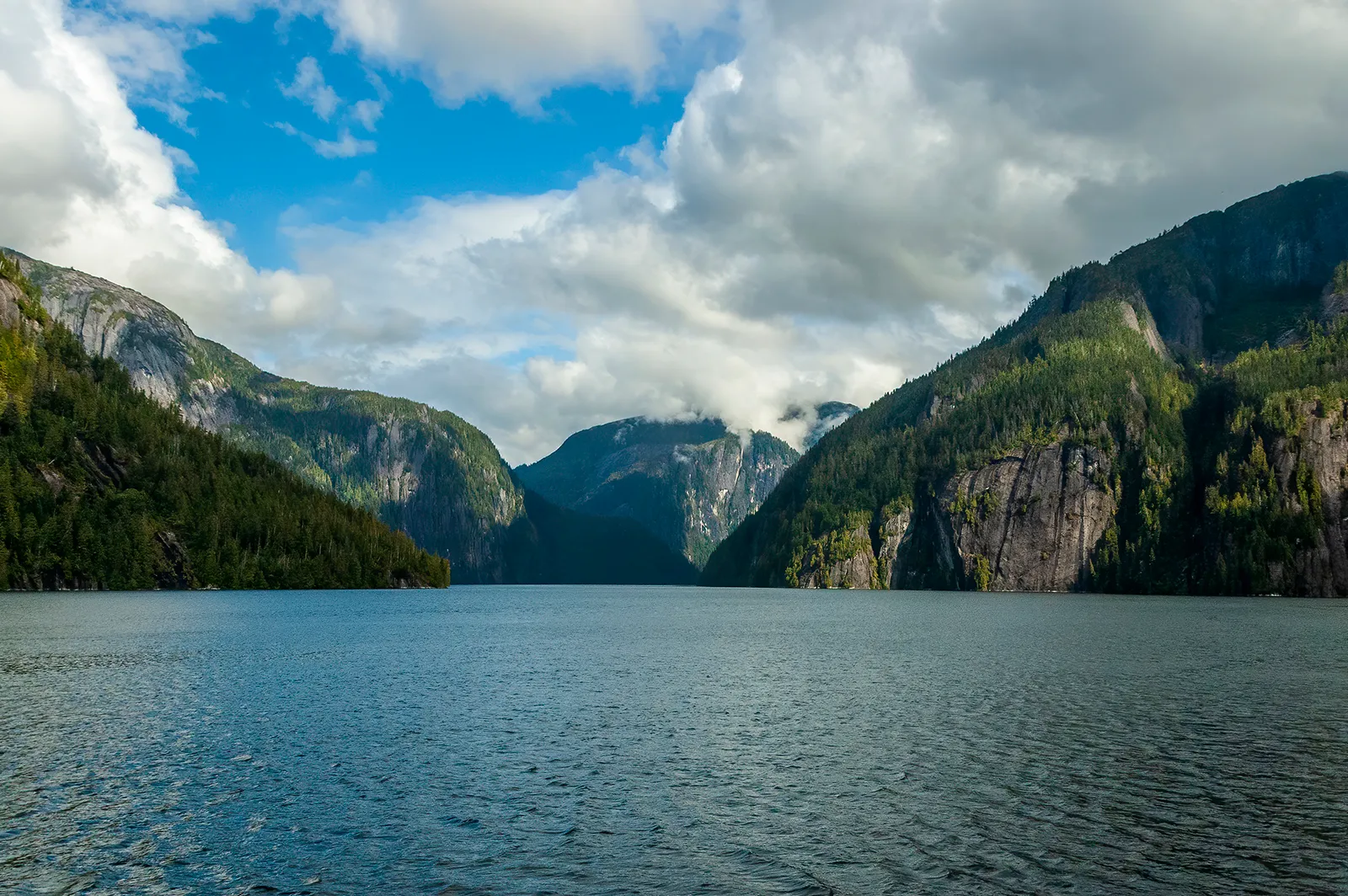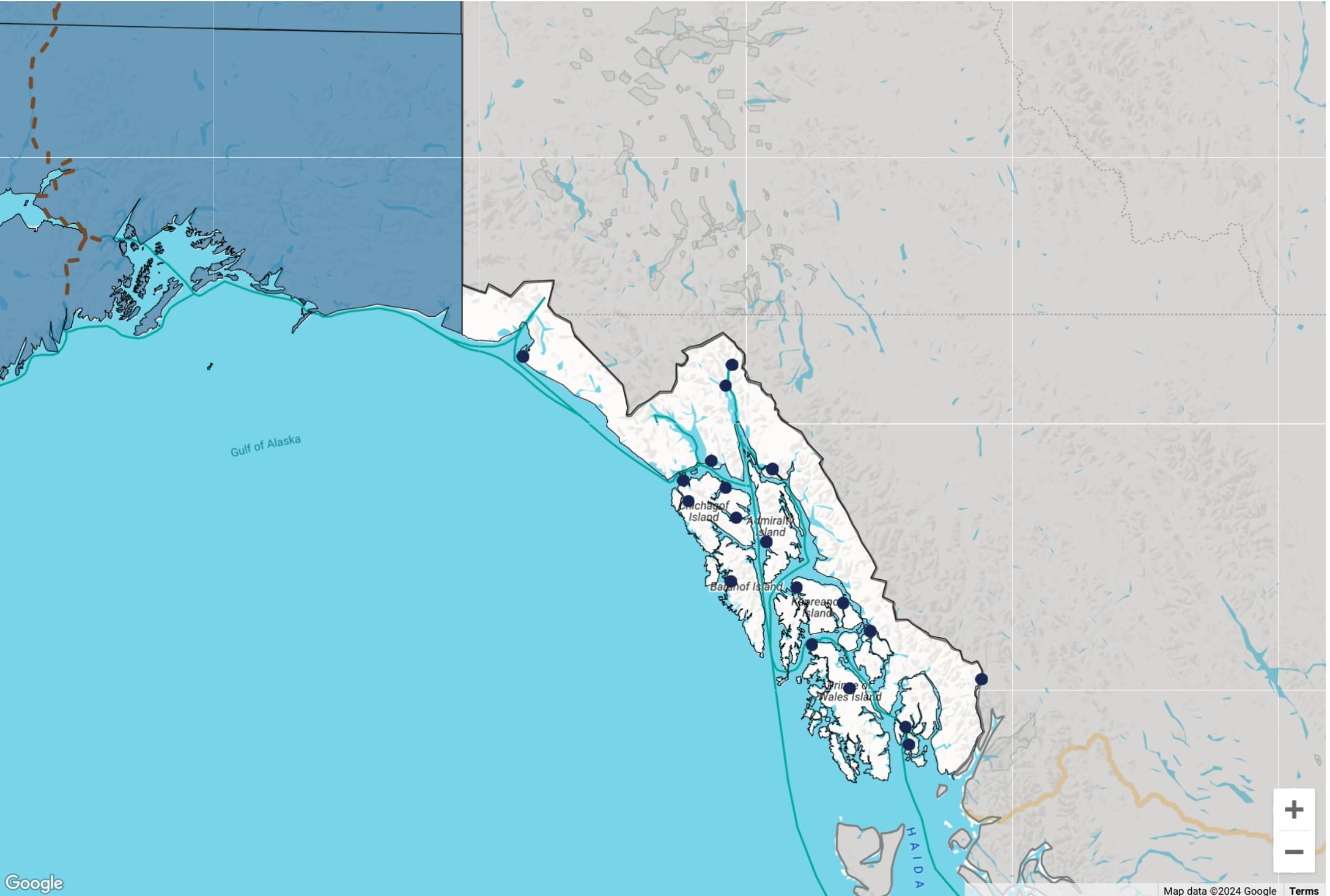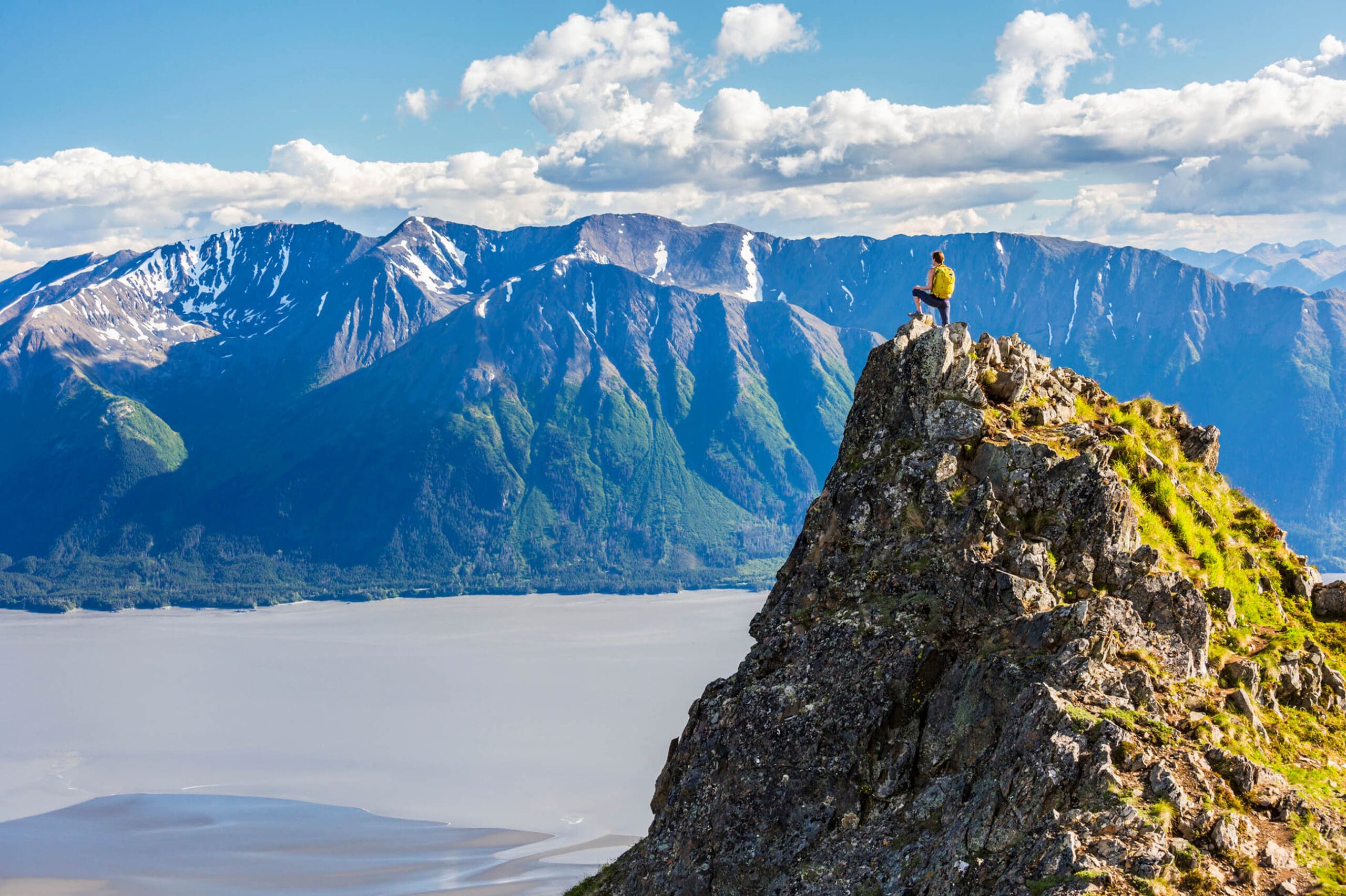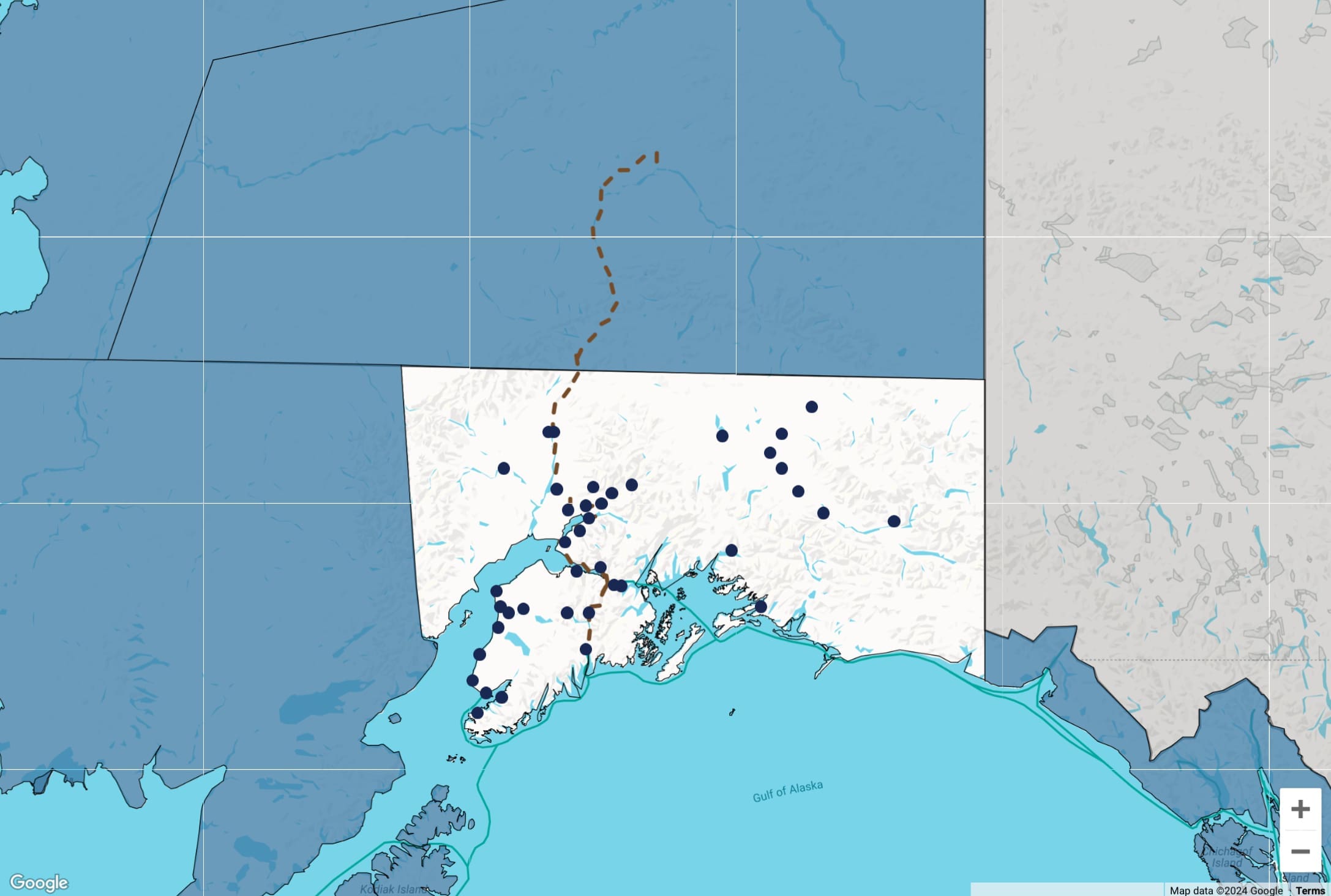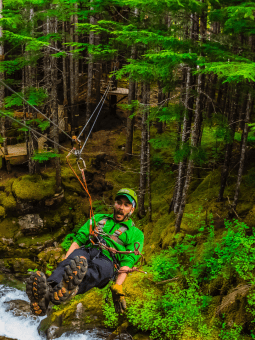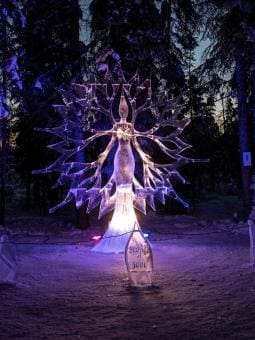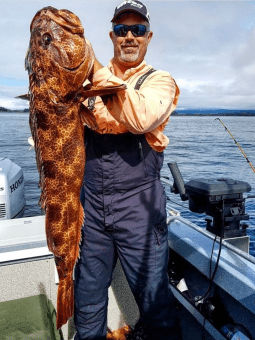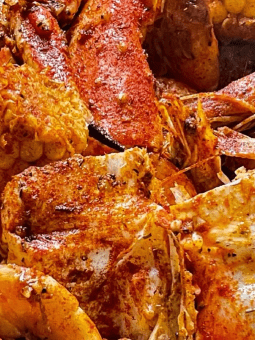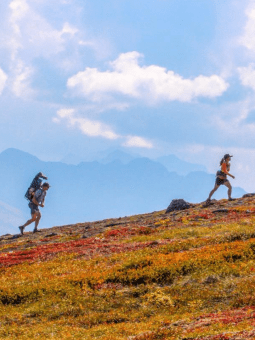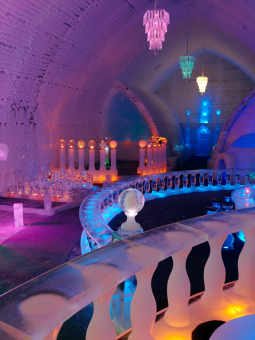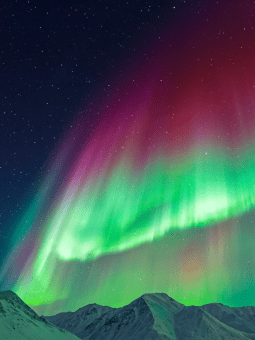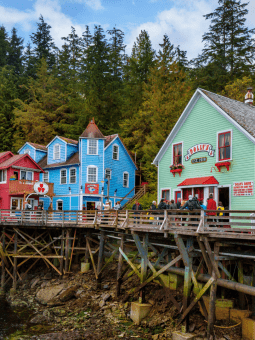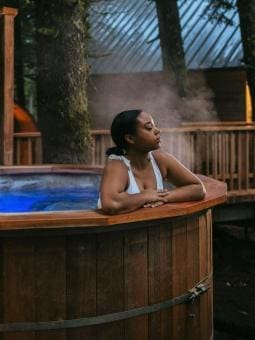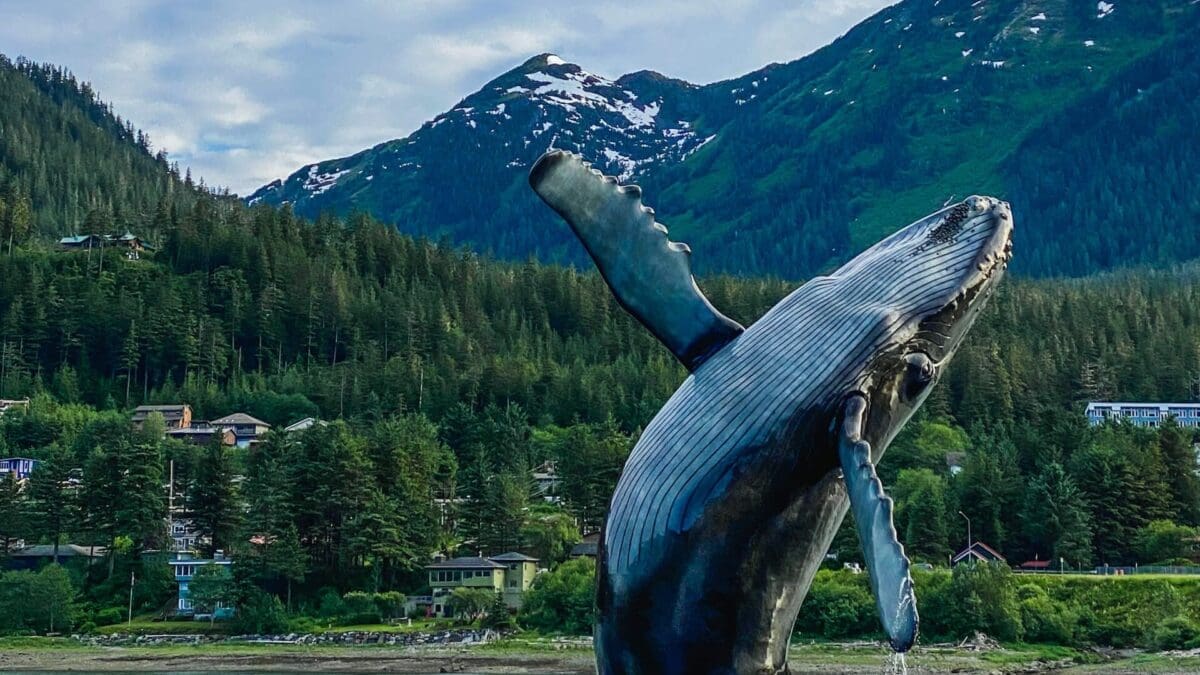In this awe-inspiring place also known as Alaska, memorable experiences are an everyday occurrence.
There’s no denying it: Alaska is one of the most beautiful places on Earth, with endless opportunities for play year-round.
Explore the great outdoors, participating in thrilling activities like glacier trekking or rafting or more relaxed ventures such as hiking, biking, fishing, camping, and simply immersing yourself in breathtaking wide-open spaces. Take a train ride, day cruise, or flightseeing tour for chances to spot wildlife, from bears to whales. Experience Alaska Native culture through cultural tours or festivals. And if you visit in winter, there’s skiing, snowboarding, dog sled tours, and more—and don’t miss watching the northern lights dance across the night sky. No matter how you choose to get around, from road trips, planes, trains, motorcoaches, or cruise ships, you’ll discover that the journey is all part of the adventure.
Alaska Cities & Towns
From rural Alaska Native villages to coastal towns to urban cities, Alaska is home to a broad range of communities, each with their own unique activities, cultures, and attractions. The state’s three largest cities — Anchorage, Juneau, and Fairbanks — are the state’s air service hubs and are ideal jumping off points for Alaska adventures.
If you’re traveling by cruise ship, you will explore the beautiful port towns along the Inside Passage region, which is home to Juneau, Alaska’s state capital, along with the Tlingit, Haida, Eyak, & Tsimshian peoples. Southcentral Alaska is the traditional homeland of the Athabascan and Sugpiaq people and is the state’s most populated region, with over half of the state’s population and the biggest city – Anchorage. The hub of Interior Alaska is Fairbanks, connecting to the communities surrounding Denali National Park and Preserve, Athabascan villages, and the Alaska Highway.
The Arctic region is home to Utqiaġvik, the United States’ northernmost city, along with many Inupiaq villages, remote communities, Nome, and Prudhoe Bay. The communities of Southwest Alaska stretch from Bethel and the Yup’ik and Cup’ikvillages in western Alaska, to Kodiak and Sugpiaq villages on Kodiak Island, to Unalaska/Dutch Harbor and Unangax̂villages and communities located along the Aleutian Islands.
Plot Your Course
Arctic Region
The Arctic is one of Alaska’s most remote and diverse regions, filled with cultural opportunities, unique wildlife, and a landscape ranging from the Arctic coastline to broad stretches of tundra to the dramatic peaks of the Brooks Range. Vast areas of the Arctic are protected as national parks and wildlife refuges, including Gates of the Arctic National Park and Preserve and Arctic National Wildlife Refuge.
Located primarily above the Arctic Circle, the Arctic region is one of the best spots to view the northern lights and see abundant wildlife including huge herds of migrating caribou and flocks of migratory birds, wolves, musk ox, Arctic foxes, and even polar bears. The Arctic region provides opportunities for rugged backcountry expeditions, off-the-beaten track road trips on the Dalton Highway, and unique cultural experiences. For those that are interested in visiting the Arctic Circle but are limited on time, day trips are available from Fairbanks that give you just a taste of this beautiful, wild landscape.
Alaska’s Arctic region is home to the Inupiat people, many of whom still live a subsistence lifestyle and preserve their history verbally from generation to generation. The Arctic is filled with a rich history and culture, from the gold rush days of yore to the Bering Land Bridge National Preserve, where the first humans passed from Asia into the Americas over 10,000 years ago.
The communities of Alaska’s Arctic are remote and accessibly primarily by plane. Regularly scheduled flights to top destinations like Nome, Kotzebue, Utqiagvik (Barrow), and Prudhoe Bay/Deadhorse are available from Anchorage and Fairbanks, and smaller communities and villages are accessible by bush planes and air taxis. The famed Dalton Highway, stretching 414 miles from north of Fairbanks through Coldfoot and on to Prudhoe Bay/Deadhorse, travels through the heart of the Arctic region to the Arctic Coast.
Map of Arctic Region
Interior Region
In Alaska’s heartland, you’ll see the continent’s tallest peak, Denali, and wide expanses of tundra. The forests are teeming with wildlife ranging from the formidable grizzly bear to large herds of caribou to the state bird – the willow ptarmigan. Experience summer’s midnight sun or winter’s northern lights. Wildlife and spectacular mountain scenery can be seen along the highway that connects Anchorage to Fairbanks, running by the entrance to one of Alaska’s top destinations: Denali National Park and Preserve. The Interior is the original home of Alaska’s Athabascan peoples. Gold miners, farmers, and fur trappers later discovered the riches of this region.
Fairbanks is the largest city in the Interior — one of the five regions in Alaska. Here, you can explore Alaska’s rich Alaska Native and gold rush history at the city’s museums and cultural centers and enjoy a wide variety of visitor services including lodging, restaurants, shops, tour options, and outdoor recreation opportunities. The Fairbanks International Airport is served by local, domestic, and international flights.
Much of Interior Alaska is accessible by road, with the Parks Highway, Richardson Highway, and Steese Highway all intersecting in Fairbanks. The Alaska Railroad travels through part of Interior Alaska, with a stop at the entrance of Denali National Park before ending in Fairbanks. Road trippers who drive to Alaska through Canada get their first glimpse of Alaska in the Interior, crossing the border on the Alaska Highway and then heading towards the town of Tok.
Map of Interior Alaska
Inside Passage Region
Shaped by the staggering force of massive glaciers millions of years ago, Alaska’s Inside Passage stretches 500 miles along the Pacific Ocean and boasts wildlife-filled fjords, tidewater glaciers, and lush island scenery. The Tongass National Forest — the largest national forest in the United States and the largest intact temperate rainforest in the world — covers the vast majority of the Inside Passage.
The Inside Passage is home to Tlingit, Haida, and Tsimshian Alaska Native peoples whose history is reflected in towering totem poles and whose vibrant culture can be seen today through art, song, and dance. Russian settlers left their legacy through onion-domed churches gleaming with icons.
Today, the Inside Passage is the most popular route for large and small cruise ships departing from the Seattle, Los Angeles, and Vancouver, B.C. from May through September. For those that want to travel at their own pace, the Inside Passage is also accessible on the state ferry along the Alaska Marine Highway System, which stops in 35 ports of call from Bellingham, WA to Dutch Harbor in Alaska’s Aleutian Islands.
Both cruisers and independent travelers are awed by the lush beauty of top Inside Passage destinations including Juneau, Ketchikan, Petersburg, Sitka, Skagway, Wrangell, and Glacier Bay National Park & Preserve. There’s no shortage of adventures to be had, including kayaking, hiking, fishing, experiencing Alaska Native culture, glacier viewing, and searching for wildlife including whales, bears, and eagles.
Map of Inside Passage Region
Southcentral Region
Traditional lands of the Athabascan people, Southcentral Alaska is home to over half of the state’s population. Anchorage, the largest city in Alaska, is the starting point for most adventures in the region and seamlessly blends urban amenities with Alaska wilderness. Here, you’ll find world-class museums, plenty of lodging options, fantastic restaurants, and shopping, along with a over 100 miles of multi-use trails, easy access to Chugach State Park, and salmon fishing right downtown.
Southcentral is a playground of Alaska activities, from legendary salmon fishing on the Kenai River and Copper River Valley to hiking in the Chugach National Forest to whale watching in Kenai Fjords National Park. With mountains, lakes, tundra, and coastline, Southcentral offers the advantages of remote wilderness but is easily accessible by a network of highways. The majority of the 400-mile-long Alaska Railroad cuts through the region, starting in Seward and connecting to top destinations in Southcentral including Whittier, Girdwood, Anchorage, and Talkeetna.
The region is home to the largest national park in the United States – Wrangell-St. Elias National Park and Preserve, accessible through the gateway communities of Glennallen, Chitina, Copper Center, and McCarthy. This 13 million acre park is a haven for backcountry adventures and provides a fascinating glimpse into the state’s copper mining history.
Boaters and kayakers will revel in exploring the coves, bays, and glaciers of Prince William Sound from the coastal communities of Whittier, Valdez, and Cordova. The Mat-Su Valley is the center of the region’s agricultural activity and provides access to hiking, fishing, boating, camping, and the basecamp for Denali climbing and flightseeing trips from Talkeetna. Anglers in search of that trophy salmon or halibut will find plenty of opportunities for fishing in the Kenai Peninsula, along with camping, hiking, kayaking, and wildlife viewing in top destinations like Seward, Homer, and Kenai.
Map of Southcentral Region
Southwest Region
For those with a sense of adventure and a naturalist streak, few places on earth compare with the wonders of Southwest Alaska. Brown bears gather in large numbers to feed on salmon and more than 240 bird species inhabit the area’s wetlands and coastline. The region’s terrain ranges from a landscape of volcanoes in Katmai National Park and Preserve, created by the 1912 eruption of the Novarupta volcano, to the windswept Aleutian Islands that make a 1,200-mile sweep toward Asia. The Yup’ik, Cup’ik, Unangax̂, and Sugpiaq (Alutiiq) peoples have called this area home for thousands of years.
The landscapes in Southwest Alaska are as diverse as the as the experiences that await visitors to this fascinating region, home to World War II history in Unalaska/Dutch Harbor, the verdant landscape of Kodiak Island, world-famous brown bears of Katmai National Park and Preserve, rich salmon runs in Bristol Bay, large concentrations of birds in the Pribilof Islands and Yukon-Kuskokwim Delta, and so much more.
Southwest Alaska is not on the road system and access to most communities is by air taxi, though larger towns like Kodiak, Bethel, King Salmon, Dillingham, and Dutch Harbor are accessible by scheduled air service. Many of the coastal communities are also accessibly by the Alaska Marine Highway ferry.
Map of Southwest Region
Things To Do in Alaska
Alaska is the land of superlatives: largest national park, highest peak, longest coastline, biggest state, longest day and night. The list goes on, and with all of these unparalleled characteristics, you’d be hard pressed to cover even a fraction of this place in a typical one- or two-week vacation period. The 49th state offers so many things to do and see, you could vacation here for the rest of your life and never have the same experience twice.
From ATVs to ziplines and everything in between, Alaska has the adventure for you. Experience Alaska’s diverse wildlife, from bear viewing to birding. Explore the vast landscapes on guided and self-guided hiking, backcountry camping, glacier trekking, skiing, and biking trips. Experience Alaska’s coastline, rivers, and lakes in vessels of all shapes and sizes, from stand up paddleboards to jet boats to private cruises. Land a trophy salmon or halibut on a fishing charter and then sample Alaska’s local seafood, produce, and brews on a culinary tour. Learn about Alaska Native culture and marvel at the shimmering northern lights. And that’s the tip of the iceberg when it comes to things to do in Alaska. If you’re looking for a deal, check out our Travel Specials for discounts on activities, accommodations, transportation, and packages.
- Adventure
- Alaska Native Culture
- Alaska Day Cruises
- Festivals & Events
- Fishing
- Food & Entertainment
- Hiking & Outdoor Recreation
- Museums, Arts & History
- Northern Lights
- Sightseeing & Tours
- Spas & Wellness Experiences
- Wildlife Viewing
- Winter Activities
Getting To & Around Alaska
Whether by air, road, or sea, a vacation to Alaska includes a scenic journey that is sure to be as memorable as the destination – and each has its own unique set of benefits. Independent travelers will enjoy traveling to and around Alaska by car or RV for the ultimate road trip, but there are lots of options for getting around Alaska without a car. Once you arrive, you can travel within the state by plane, cruise, ferry, train, car, or motorcoach/bus/shuttle. No matter which mode you choose, traveling through Alaska offers a front row seat to experience inspiring scenery and exquisite wildlife.
Air travel includes jet service to Alaska’s major airports of Fairbanks, Anchorage, and Juneau. Regional air carriers and chartered air services provide access to smaller communities, villages, and remote areas throughout the state.
Cruising to Alaska offers a spectacular journey to and through Alaska’s magnificent scenery. Major cruise lines feature a variety of room options, all-inclusive meals, entertainment, and amenities, while smaller cruise operators cater packages to specific traveler styles like adventure or luxury travel.
The Alaska Marine Highway System is another option to reach the major ports of call in the state by boat. These ferries welcome both drive-on and walk-on travelers, and offer multi-day mainline routes to reach Alaska from Bellingham, WA, and Prince Rupert, British Columbia. For sleeping accommodations, a rider can choose to rent a private room, camp under the stars on the upper deck, or roll out a sleeping bag in a covered, heated solarium.
For those who love road trips, driving to Alaska is a one-of-a-kind opportunity full of unfolding vistas of magnificent landscapes, Indigenous cultural experiences, rich history, and diverse wildlife. The drive does require some pre-planning – for more information on specific driving routes, visit North to Alaska online. And remember – you have to drive through Canada to drive to Alaska, so be sure to bring your passport! For a road trip that lets you truly sit back and enjoy the views, you can get around Alaska by motor coach /bus tour or shuttle transfer to some of the state’s top destinations.
- All
- Adults Only
- Adventure
- Africa Safaris & Wildlife
- Alaska
- All Inclusive
- AMA Waterways Chobe River African Safari Cruise
- AMA Waterways Danube River Cruise
- AMA Waterways Magdalena River Cruise
- AMA Waterways Mekong River Cruise
- AMA Waterways Nile River Cruise
- AMA Waterways Soulful Experiences
- AMAWaterways
- Antigua & Barbuda
- Asia
- Avalon Waterways Danube River Cruise
- Avalon Waterways Garonne River Cruise
- Avalon Waterways Main River Cruise
- Avalon Waterways Mekong River Cruise
- Avalon Waterways Moselle River Cruise
- Avalon Waterways Rhine River Cruise
- Avalon Waterways Rhône River Cruise
- Avalon Waterways River Cruises
- Avalon Waterways Seine River Cruise
- Avalon Waterways The Nile River Cruise
- Bahamas
- Bali
- Barbados
- Bus
- Caribbean Islands
- Central America
- Chobe River
- Colombia
- Cruise
- Cruise Partners
- Culture Holidays
- Curaçao
- Danube River
- Destinations & Experiences
- Dominican Republic
- Egypt
- Europe Experience
- Grenada
- Group Tour
- Honeymoon/Weddings
- Hot Travel Deals
- Jamaica
- Land Travel
- Madrid
- MOTA Preferred Partners
- Nature
- North America
- Ocean & Sea Cruise
- Panama
- Penguins
- Playa Hotels & Resorts
- Private Tour
- Regent Seven Seas Cruises
- Regent Seven Seas Cruises®
- Resorts
- River Cruise
- Rocky Mountaineer
- Saint Lucia
- South America
- South Pacific
- Spain
- St. Kitts and Nevis
- St. Martin / St. Maarten
- St. Vincent and the Grenadines
- The Nile
- The Rhine, Main, and Moselle
- The United States
- The Verandah Antigua
- Train
- Travel News
- Travel Tours
- Vietnam & Cambodia
- Virgin Voyages




